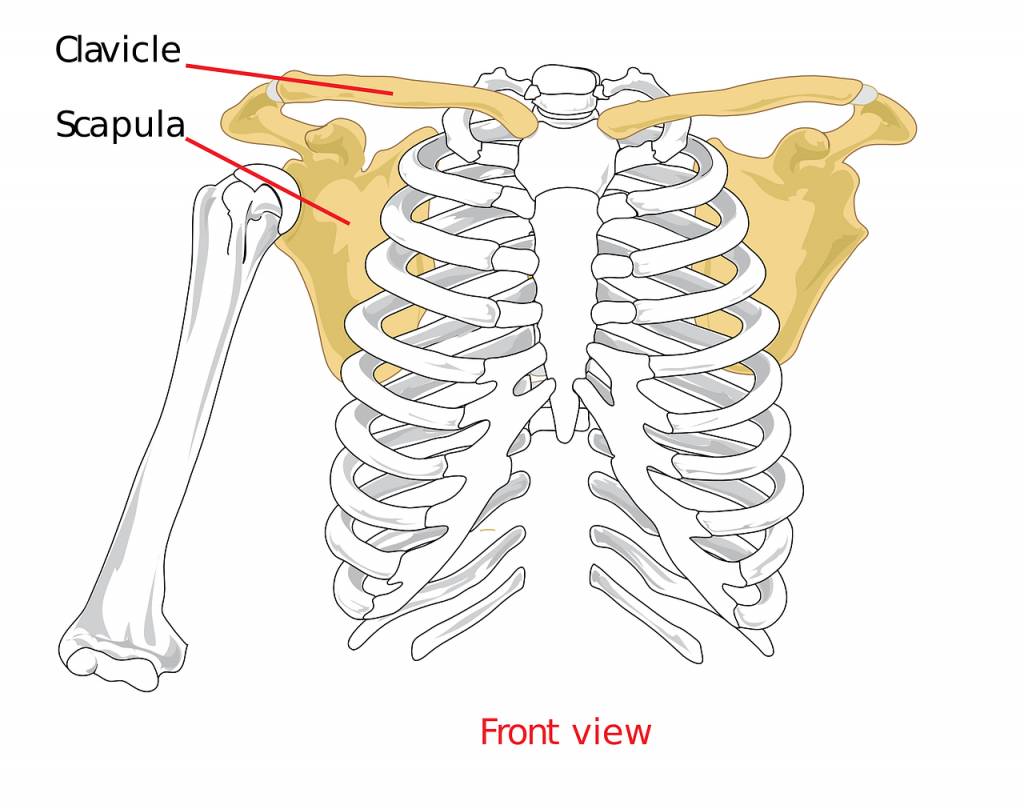Comprehensive Physiotherapy for Shoulder Treatment in Ottawa: Your Guide to Recovery!
If you’re experiencing shoulder pain or discomfort, you’re not alone. The shoulder is a highly complex joint, and problems can arise from a variety of causes. This article aims to provide you with valuable insights into shoulder physiotherapy in Ottawa, helping you understand the range of treatments available, the common causes of shoulder pain, and how physiotherapy can help restore mobility and function.
Why Choose Physiotherapy for Shoulder Pain in Ottawa?
Shoulder pain can stem from several conditions, and physiotherapy is a highly effective approach to treating these issues. Whether you’re dealing with a sports injury, chronic pain, or post-surgical recovery, a physiotherapist can develop a tailored treatment plan to help you regain full mobility and function.
If you find yourself asking, “What types of shoulder problems can be treated?” or “How can physiotherapy help with my shoulder pain?”, this article will provide you with the answers you need.
Understanding the Shoulder Joint
The shoulder joint is incredibly versatile, allowing for a wide range of movements. It consists of several interconnected structures that work in harmony to ensure optimal mobility:
- Glenohumeral Joint: The true shoulder joint, where the “ball” of the humerus (upper arm bone) fits into the “socket” of the scapula (shoulder blade). This ball-and-socket joint is highly mobile, allowing the arm to move in multiple directions.
- Acromioclavicular (AC) Joint: Located where the collarbone (clavicle) meets the acromion of the scapula, this joint plays a crucial role in shoulder stability. Though not highly mobile, it can be a common site for injuries, particularly after falls or trauma.
- Sternoclavicular (SC) Joint: This joint connects the collarbone to the breastbone. It is a relatively stable joint, but can still suffer from injuries like sprains or fractures due to impacts or accidents.
If your shoulder is unable to produce all of its healthy movement, you should seek Physiotherapy for shoulder treatment in Ottawa. Your physiotherapist can help to mobilize the joint and teach you how to safely restore its function!

Watch this video to see how the shoulder moves!
Common Causes of Shoulder Problems
Several factors can contribute to shoulder pain and dysfunction. Here are a few common causes:
Frozen Shoulder (Adhesive Capsulitis):
This condition involves the thickening and tightening of the shoulder capsule, resulting in restricted movement and significant pain. Physiotherapy can help restore mobility by targeting the shoulder joint’s range of motion and addressing any inflammation.
AC Joint Injuries:
The acromioclavicular joint can become injured due to falls or direct trauma to the shoulder. These injuries often result in pain, swelling, and limited movement. Physiotherapy helps by improving joint mobility and reducing pain.
Thoracic Spine Dysfunction:
The scapula rests on the ribcage and is directly influenced by the movement of the thoracic spine (mid-back). Poor posture or restricted movement in the thoracic spine can affect the shoulder’s function, leading to pain and decreased mobility. Physiotherapy can address this by improving spinal mobility and scapular movement.
Muscle Strains or Ligament Sprains:
The shoulder is surrounded by a complex network of muscles, tendons, and ligaments. Overuse, sports injuries, or trauma can lead to strains, sprains, or tears. Physiotherapists can help by restoring muscle function and joint stability.
Bursitis:
Bursitis occurs when the small fluid-filled sacs (bursae) that cushion the shoulder joints become inflamed, usually from overuse or repetitive motion. The inflammation causes pain, swelling, and tenderness, often making it difficult to move the shoulder. Physiotherapy is key to restoring normal movement patterns and strengthening the muscles around the joint to prevent recurrence.
Tendinitis:
Tendinitis is inflammation of the tendons in the shoulder, typically caused by repetitive motion, overuse, or sudden injury. Commonly affected tendons include the rotator cuff tendons and the biceps tendon. This condition results in pain, swelling, and weakness in the shoulder. Physiotherapy can reduce inflammation, improve tendon health, and restore strength through targeted exercises, stretching, and manual therapy techniques.
Rotator Cuff Injuries:
The rotator cuff is a group of four muscles and tendons that help stabilize the shoulder. These tendons can become inflamed, strained, or torn due to overuse, trauma, or aging. Rotator cuff injuries are a common cause of shoulder pain, often resulting in weakness and difficulty lifting the arm. Depending on the severity of the injury, physiotherapy can help with pain management, strengthening the rotator cuff muscles, and improving range of motion. Severe cases may require surgery, but rehabilitation is crucial for recovery.
Neck Problems:
Sometimes, neck issues can refer pain to the shoulder. Conditions like cervical disc herniation, poor posture, or nerve compression in the neck can cause pain or stiffness that affects the shoulder area. The neck and shoulders are closely connected, so tension in one area can impact the other. Physiotherapy that focuses on both the neck and shoulders can help alleviate pain, improve posture, and restore proper movement in both areas.
Upper Cross Syndrome:
Upper cross syndrome is a postural imbalance caused by tightness in the chest and upper back muscles, combined with weakness in the deep neck and upper back muscles. This condition often results from sitting for long periods or poor posture, which can lead to shoulder pain, neck stiffness, and even headaches. Physiotherapy that targets posture correction, stretches for tight muscles, and strengthening for weak muscles can help reverse the effects of upper cross syndrome and improve overall shoulder function.
How Physiotherapy Can Help
Physiotherapy for the shoulder in Ottawa is designed to address a wide variety of conditions. Your physiotherapist will conduct a comprehensive assessment to determine the underlying causes of your pain and dysfunction. This may include:
Assessing Scapulo-Humeral Rhythm: The coordination between the shoulder blade and the arm bone is crucial for smooth movement. Your physiotherapist will assess this rhythm to identify any dysfunctions.
Evaluating Scapulo-Thoracic Mobility: The mobility of the shoulder blade is closely linked to the movement of the thoracic spine. If the spine is stiff, it can restrict shoulder movement. Physiotherapy can help improve spinal mobility, which in turn enhances shoulder function.
Testing Joint Ranges of Motion: Your physiotherapist will test the range of motion in the shoulder joints to identify areas of restriction or pain.
Muscle Function Testing: Evaluating the strength and function of the muscles surrounding the shoulder is key in diagnosing and treating shoulder pain. Your physiotherapist will also assess specific tasks, such as lifting or carrying, to identify any difficulties or limitations.
Postural Assessments: Poor posture can contribute to shoulder pain, especially when the muscles and joints become misaligned. Your physiotherapist will assess your posture to determine if it’s affecting your shoulder function.
Personalized Treatment Plan
The shoulder is a complex structure with multiple joints, muscles, tendons, and ligaments working in unison. When any part of this system becomes compromised, it can result in pain, discomfort, or dysfunction. Physiotherapy for the shoulder in Ottawa aims to identify these disruptions and develop a personalized treatment plan to restore mobility and alleviate pain.
No two shoulders are the same, which is why at Back To Health Wellness Center, one-on-one care is at the core of our approach. Your physiotherapist will work closely with you to understand your unique symptoms and challenges, ensuring your treatment is tailored to your specific needs. After a thorough assessment, your physiotherapist will design a treatment plan that may include a combination of exercises, manual therapy, postural correction, and other effective modalities to help reduce pain, restore movement, and prevent future injuries.
Here are some of the key modalities your physiotherapist might use to help you recover:
Active Release Techniques (A.R.T):
Active Release Techniques (A.R.T) is a hands-on therapy designed to release tension and break down scar tissue in the muscles, tendons, and fascia. This technique is especially effective for treating soft tissue injuries and conditions like tendonitis, muscle strains, or post-surgical stiffness. Your practitioner will apply precise pressure and guide your affected muscle through specific movements, helping to target and release tight areas that may be causing pain or restricting movement, improving circulation, and promoting healing.
Cupping Therapy
Cupping is known for its ability to reduce pain, enhance circulation, and improve the healing process. In this treatment, suction cups are placed on the skin, creating negative pressure that helps lift the tissues and encourages blood flow to the area. Cupping therapy can be useful for relieving muscle tension, improving flexibility, and reducing inflammation. By increasing blood flow and reducing stagnation in the muscles and fascia, cupping can speed up the recovery process and improve overall mobility.
Dry Needling:
Dry needling is a technique where very fine needles are inserted into specific trigger points in the muscles to release tightness and reduce pain. Unlike acupuncture, which focuses on traditional energy pathways, dry needling targets specific muscle knots or areas of tension that can cause pain and limit range of motion. This modality is highly effective for treating conditions like muscle strains, rotator cuff injuries, and shoulder impingement. Dry needling helps to stimulate the muscle tissue, promote healing, and decrease pain, making it an important tool for those dealing with chronic shoulder issues or muscle imbalances.
Manual Therapy
Manual therapy uses hands-on techniques to manipulate joints and soft tissues, improving mobility, reducing pain, and correcting misalignments. Your physiotherapist may apply joint mobilizations, soft tissue massage, or myofascial release to reduce stiffness and improve flexibility. This approach enhances range of motion, reduces inflammation, and promotes healing through skilled, hands-on interventions.
Meet One Of Our Physios – Hiral!
Through the combination of therapeutic exercises, manual therapy, and specialized techniques like A.R.T, cupping, dry needling, and manual therapy, your physiotherapist will guide you through a comprehensive recovery process. Together, we’ll work toward restoring your shoulder’s function, enhancing your mobility, and reducing your pain, so you can return to living an active, pain-free life.
Try out our Physiotherapy for the shoulder in Ottawa! Book an appointment today!
Understanding the shoulder joint’s complexities is key to addressing pain and restoring function. Whether you have a sports injury, repetitive strain, or are recovering from surgery, physiotherapy can help. It will restore mobility, reduce pain, and help you return to daily activities.
If you’re in Ottawa and experiencing shoulder pain, our physiotherapy services are available! We specialize in diagnosing and treating shoulder conditions. Our experienced team is dedicated to giving you the care you need for a full recovery.
Book an appointment today and begin your journey toward a pain-free, healthier shoulder!


